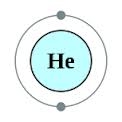Hydrogen as an alternative to Helium
As the Helium shortage continues to grow, Helium prices are rocketing sky high and in some cases companies are being told they can not get any.
Are you one of them?
Helium is a by-product from only a few underground, natural gas wells in the world. Most of the Helium present today was created by the natural radioactive decay of heavy radioactive elements, such as Thorium and Uranium, making it a non-renewable resource.

What options do you have?
1. Purifying a lower grade of Helium to get Ultra High Purity Helium
2. Changing carrier gases
Purifying a lower grade of Helium to get Ultra High Purity Helium
• Many people have asked us, if they can use various filters/traps and heated getter assemblies to filter and purify industrial grade Helium. This is possible, but filters/traps are intended to clean up minor contamination (ppm level), they are not intended to take the gas to a higher purity level. The heated getter assembly can be used to increase the purity of a gas and is used most commonly with PDD detectors, which are extremely sensitive. Please note that heated getter assemblies are designed to work with high purity gases and not lower purity gases.
• As industrial grade/balloon grade helium is of a lower purity. It is assumed that it contains higher moisture and hydrocarbon levels along with other contaminants, to the level of 100’s – 1000’s of ppm. With this assumption in mind, the biggest concerns are that you would be changing the traps and getter assemblies more frequently, increasing your overall consumable costs, making the gases even more expensive.
Changing Carrier Gases
• The best and most efficient option
• There are two choices: move to Nitrogen or Hydrogen.
• The use of Nitrogen is discouraged as it is a heavier gas. Which in-turn would make your analysis runs longer.
• Hydrogen is the better choice as it is lighter, allowing you to increase the linear flow rate which in turn means shorter runs.
• Hydrogen will allow you to achieve separations at lower temperatures, which in turn will decrease the column bleed and increase the column life.

Related Topic: Making the change from gas canister to gas generator
Resources
• How to convert from Helium to Hydrogen as a carrier gas in Gas Chromatography - click here
